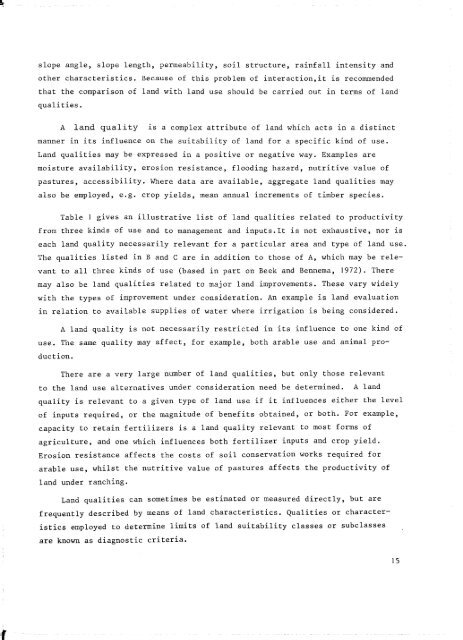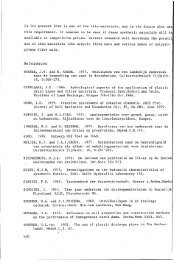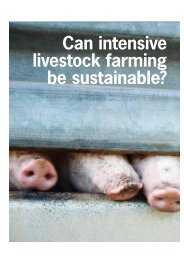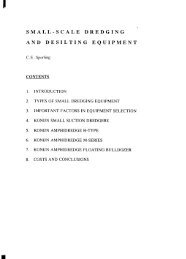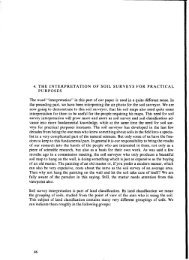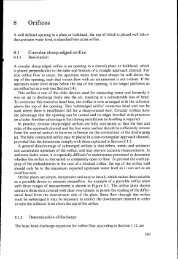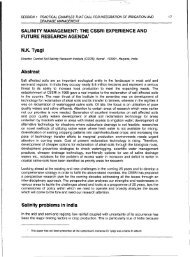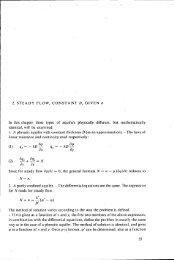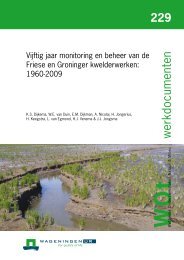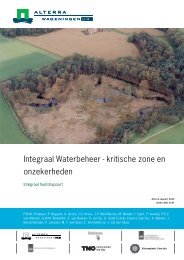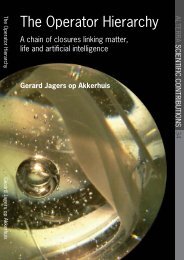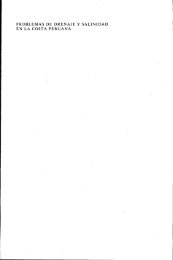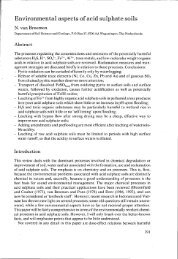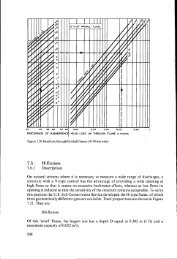Chapter 2 Basic concepts - ROOT of content
Chapter 2 Basic concepts - ROOT of content
Chapter 2 Basic concepts - ROOT of content
You also want an ePaper? Increase the reach of your titles
YUMPU automatically turns print PDFs into web optimized ePapers that Google loves.
cslope angle, slope length, permeability, soil structure, rainfall intensity andother characteristics. Because <strong>of</strong> this problem <strong>of</strong> interaction,it is recommendedthat the comparison <strong>of</strong> land with land use should be carried out. in terms <strong>of</strong> landqualities.A land quality is a complex attribute <strong>of</strong> land which acts in a distinctmanner in its influence on the suitability <strong>of</strong> land for a specific kind <strong>of</strong> use.Land qualities may be expressed in a positive or negative way. Examples aremoisture availability, erosion resistance, flooding hazard, nutritive value <strong>of</strong>pastures, accessibility. Where data are available, aggregate land qualities mayalso be employed, e.g. crop yields, mean annual increments <strong>of</strong> timber species.Table 1 gives an illustrative list <strong>of</strong> land qualities related to productivityfrom three kinds <strong>of</strong> use and to management and inputs.It is not exhaustive, nor iseach land quality necessarily relevant for a particular area and type <strong>of</strong> land use.The qualities listed in B and C are in addition to those <strong>of</strong> A, which may be relevantto all three kinds <strong>of</strong> use (based in part on Beek and Bennema, 1972). Theremay also be land qualities related to major land improvements. These vary widelywith the types <strong>of</strong> improvement under consideration. An example is land evaluationin relation to available supplies <strong>of</strong> water where irrigation is being considered.A land quality is not necessarily restricted in its influence to one kind <strong>of</strong>use. The same quality may affect, for example, both arable use and animal production.There are a very large number <strong>of</strong> land qualities, but only those relevantto the land use alternatives under consideration need be determined. A landquality is relevant to a given type <strong>of</strong> land use if it influences either the level<strong>of</strong> inputs required, or the magnitude <strong>of</strong> benefits obtained, or both. For example,capacity to retain fertilizers is a land quality relevant to most forms <strong>of</strong>agriculture, and one which influences both fertilizer inputs and crop yield.Erosion resistance affects the costs <strong>of</strong> soil conservation works required forarable use, whilst the nutritive value <strong>of</strong> pastures affects the productivity <strong>of</strong>land under ranching.Land qualities can sometimes be estimated or measured directly, but arefrequently described by means <strong>of</strong> land characteristics. Qualities or characteristicsemployed to determine limits <strong>of</strong> land suitability classes or subclassesare known as diagnostic criteria.15


